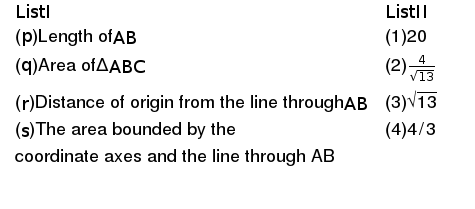A
B
C
D
Text Solution
Verified by Experts
The correct Answer is:
|
Topper's Solved these Questions
PARABOLA
CENGAGE|Exercise Question Bank|21 VideosView PlaylistPARABOLA
CENGAGE|Exercise Comprehension Type|2 VideosView PlaylistPAIR OF STRAIGHT LINES
CENGAGE|Exercise Exercise (Numerical)|5 VideosView PlaylistPERMUTATION AND COMBINATION
CENGAGE|Exercise Question Bank|19 VideosView Playlist
Similar Questions
Explore conceptually related problems
Knowledge Check
A
B
C
D
Submit
A
B
C
D
Submit
A
B
C
D
Submit
Similar Questions
Explore conceptually related problems
